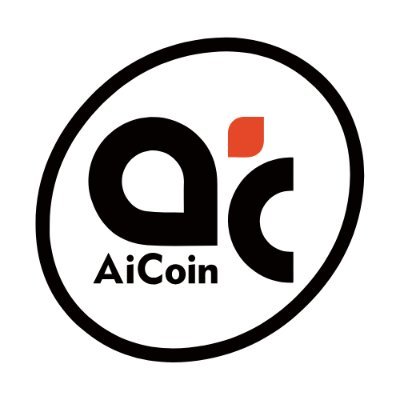Hedera’s The Hashgraph Group invests in AgNext Technologies
The Hashgraph Group, a Switzerland-based venture capital and technology firm supporting the Hedera blockchain network, has announced a strategic investment in agritech company AgNext Technologies.
According to details in a press release on April 7, the collaboration will see the Hedera ( HBAR ) blockchain network support AgNext’s growing artificial intelligence-driven agricultural solutions.
The investment sees The Hashgraph Group join AgNext’s recent fundraising initiative led by Denmark-based Novo Holdings, but more than that, is a key integration milestone for the Hedera blockchain ecosystem.
In particular, AgNext is looking to leverage Hedera’s distributed ledger technology to digitize trust in the supply chain ecosystem, including around insurance and traceability across the food supply chains.
“With this strategic co-investment alongside Novo Holdings, we look forward to embarking on the tech-enablement journey with AgNext to drive the convergence of AI and Blockchain/DLT, while jointly bringing to market Hedera-powered AgriTech solutions that will enhance AgNext’s competitive edge in the web3 era,” said Stefan Deiss, co-founder & chief executive officer of The Hashgraph Group.
AgNext will also tap into Hedera’s blockchain technology and smart contracts for immutability, and efficiency.
THG and AgNext’s goals also align around an initiative for Hedera-powered embedded devices, with these set to be available to customers globally via a new web3 venture. The partners will establish this venture in Switzerland.
AgNext raised $21 million in a Series A funding in 2021, with Alpha Wave Incubation leading the capital injection initiative.
The company has operations in India, the Middle East and the United States, with its first international office having opened in Abu Dhabi, the United Arab Emirates.
Meanwhile, Hedera is seeing notable traction in the tokenization of real-world assets. This includes via integrations such as with Chainlink and Alchemy Pay – the latter for onboarding via fiat-crypto on and off ramping.
Franklin Templeton backs $8m round for stablecoin project Cap
Franklin Templeton, a global asset manager with a growing presence in the crypto and blockchain investment market, has backed an $8 million seed round for Cap.
The asset manager led the investment round, with Ethereum ( ETH ) based stablecoin project Cap also attracting the participation of multiple leading web3-focused venture capital firms.
In details shared via X, Cap said the investment is a crucial step in its mission to offer a decentralized solution to the problem of yield generation in decentralized finance . This milestone involves the deployment of its protocol across “shared security markets” such as EigenLayer and Symbiotic.
“Cap is pioneering a first of its kind implementation of shared security markets like EigenLayer and Symbiotic to regulate the activities of financial operators. This allows traditional finance institutions and crypto-native firms to generate yield for users, while not directly exposing those users to the risks of their activities,” the protocol’s team posted on X.
Per the Cap protocol team, the project’s solution is available to users looking to tap into shared security marketplaces. This means users can benefit from staked assets on Ethereum. However, Cap’s main focus is the adoption on MegaETH, the layer 2 offering for real-time interaction with opportunities across the ecosystem.
It suggests safe and sustainable yield generation, something that could mean allowing for fresh innovation that beats the current yield-bearing stablecoins.
By being able to outsource yield generation through its stablecoin engine, Cap enables traction across a whole lot of blockchain applications, including DeFi protocols,real-world asset protocols, and liquid funds.
The $8 million seed round will help the stablecoin startup navigate the next phase of its adoption, with this adding to the $1.1 million raised via crowdfunding project Echo. Cap raised its latest financing round with the support of VC firms such as Triton Capital, Flow Traders, GSR and Japanese firm Nomura Group’s Laser Digital.
Dubai Makes Tokenizing Real Estate Official with DLD-VARA Partnership
Dubai’s Land Department (DLD) partnered with the Emirate’s Virtual Assets Regulatory Authority (VARA) to officially link the real estate registry with property tokenization platforms.
This collaboration uses an advanced governance system to integrate physical property records with blockchain-based tokens.
Dubai’s approach towards blockchain adoption is well-documented. The city is one of the foremost locations renowned for encouraging mainstream blockchain implementation. The latest move will enable property management companies to become more efficient and increase liquidity in the region’s real estate market.
The move builds on Dubai’s previously launched “Real Estate Tokenization Project.” Key officials including Helal Saeed Almarri (Director-General, Dept. of Economy and Tourism) and Marwan bin Ghalita (Director-General, DLD) attended the signing ceremony.
Related: Dubai Just Made It Easier to Own a Piece of the City with Crypto
According to reports, the core motivation behind the latest agreement is to broaden investors’ scope in the Dubai real estate sector. Property tokenization will provide a more inclusive ecosystem via fractional ownership. It would allow smaller investors to participate in the sector and enhance the Dubai real estate industry’s global appeal.
Notably, the DLD and VARA tokenization project aligns with the “Dubai Real Estate Strategy 2033,” aiming to grow the region’s real estate transaction volume to AED 1 trillion. It also contributes to the “Dubai Economic Agenda D33,” which aims to double the region’s GDP over the next decade.
Speaking on the partnership between the DLD and VARA, Almarri said it reflects the spirit of innovation and integration between Dubai’s government and digital sectors. The Director-General noted that real estate tokenization represents a qualitative leap toward a more inclusive and transparent investment model.
Related: Dubai’s VARA: Striking the Right Balance in Crypto Regulation
Meanwhile, Ghalita considers the partnership crucial in driving real estate innovation. He believes it would attract technology companies to the region and enhance the sector’s digital infrastructure.
Disclaimer: The information presented in this article is for informational and educational purposes only. The article does not constitute financial advice or advice of any kind. Coin Edition is not responsible for any losses incurred as a result of the utilization of content, products, or services mentioned. Readers are advised to exercise caution before taking any action related to the company.

Aicoin-EN-Bitcoincom
18ساعة
Bitcoin Price Watch: Bearish Momentum Builds Across All Timeframes
On the daily chart, bitcoin’s price action has shifted significantly downward, falling from a local high near $94,422 to approximately $74,434. The presence of consecutive bearish candles and increasing bearish volume indicates strong selling conviction. While psychological support may exist around the $74,000 mark, no technical bottom has formed yet. The chart reflects bearish dominance, but an oversold bounce could materialize if momentum pauses. Traders should watch for a bullish engulfing or hammer pattern near $74,000 as a potential entry signal, while failed rallies toward the $78,000–$80,000 zone may provide shorting opportunities.
BTC/USD 1D chart via Bitstamp on April 7, 2025.
The 4-hour chart reinforces the bearish sentiment with a massive bearish engulfing candle printed near $88,563, marking the beginning of a downtrend characterized by lower highs and lower lows. A short-term support zone appears to be holding around $74,434, but volume has decreased since the initial breakdown, pointing to potential exhaustion. While there is room for a temporary bounce to $78,000–$79,000, the prevailing trend remains bearish unless that level is reclaimed decisively. Scalp longs are feasible above $75,500 with tight stops, while shorts can be considered at the $78,000–$80,000 resistance zone.
BTC/USD 4H chart via Bitstamp on April 7, 2025.
On the 1-hour chart, bitcoin’s decline from $83,741 to the recent low around $74,434 illustrates a rapid loss in value, followed by a weak relief rally. The lack of volume accompanying the bounce signals a lack of conviction from buyers. If price action continues forming lower highs, such as around $77,000, it could serve as a near-term short entry level. Conservative buyers might await a retest and confirmation bounce from $74,500–$75,000, whereas intraday traders could consider long entries above $77,500 only if volume confirms.
BTC/USD 1H chart via Bitstamp on April 7, 2025.
Oscillators offer mixed signals, with the relative strength index (RSI) at 33.9, stochastic at 19.2, and commodity channel index (CCI) at −265.6 — all in neutral territory, though pointing to potential oversold conditions. The momentum indicator registers −7,657.0, signaling a buy, while the moving average convergence divergence (MACD) level of −1,750.1 remains bearish with a sell indication. This divergence suggests a possible but unconfirmed reversal opportunity if downward momentum begins to ease.
The moving averages align closely with the bearish theme. Every key short- and long-term moving average — including the 10-period exponential moving average (EMA), 20-period EMA, 50-period simple moving average (SMA), and even the 200-period SMA — signals a bearish outlook. With bitcoin’s current price below all major moving averages, trend-following models suggest staying cautious on long positions unless a structural shift occurs. In summary, despite hints of an oversold bounce, prevailing technical signals favor bears in the near term.
If bitcoin can hold support around the $74,000–$75,000 zone and print a clear reversal pattern with increasing volume, a recovery toward the $78,000–$79,000 resistance range becomes plausible. Oscillator data showing potential oversold conditions supports the likelihood of a short-term bounce, giving bulls a narrow window to reclaim momentum.
With every major moving average aligned to the downside and volume confirming the bearish trend across all timeframes, bitcoin remains under sustained selling pressure. Unless price action decisively reclaims and holds above the $78,000–$80,000 resistance, bears retain control and could drive the price lower toward or below the $72,000 threshold.
免责声明:本文章仅代表作者个人观点,不代表本平台的立场和观点。本文章仅供信息分享,不构成对任何人的任何投资建议。用户与作者之间的任何争议,与本平台无关。如网页中刊载的文章或图片涉及侵权,请提供相关的权利证明和身份证明发送邮件到support@aicoin.com,本平台相关工作人员将会进行核查。
Bitcoin Slips, Ether Climbs: Crypto ETFs Shift Gears
There are weeks when everything seems to smile on the market. And then there are those when the numbers fall like dead leaves, silently but gravely. Bitcoin ETFs, these open windows to the crypto universe for traditional investors, have experienced one of those weeks where enthusiasm has strayed. Three days were enough to sweep away momentum, pull back capital, and instill doubt. And as often happens, everything begins with a beautiful promise…
The recent stabilization of flows in Bitcoin ETFs, long awaited as a sign of market maturity, may ultimately disappoint. The hoped-for calm has turned into a sharp decline, shattering the illusions of bullish continuity. Where analysts saw a decisive turning point, the numbers tell a more unstable, even disorienting reality.
Wednesday was the kind of day where the numbers felt like spring. 221 million dollars flowed into Bitcoin ETFs. You could almost hear portfolio managers sighing with ease. BlackRock’s IBIT led the way, boasting +65.25 million, like a signal that the great return of institutional flows had begun. A few anecdotal withdrawals cast a shadow on the ledger, but nothing sufficient to steal the spotlight from this breath of fresh air. One started to dream.
The dream lasted only twenty-four hours. On Thursday, the numbers changed their attire. And not to a suit of light: nearly 100 million $ evaporated from the Bitcoin ETFs. Grayscale (GBTC) lost 60.2 million, Bitwise (BITB) 44.19 million, Fidelity (FBTC) 23.27 million, ARKB 20.05 million… Even the most discreet, like VanEck (HODL) and Wisdomtree (BTCW), had to bow. Volumes remained high (2.58 billion $), but net assets melted down to 92.18 billion $. The winter had not said its final word.
Friday was more discreet, but no less worrying. One of those days when you open the curtains and nothing happens. Zero influx. No new dollar in the 12 funds scrutinized. And yet, 65 million have left . Again GBTC, ARKB, and BITB in the crosshairs, like pillars that are slowly being eroded. And while interest faded, volumes jumped to 4.43 billion $, as if everything was happening behind the scenes. Silence on the surface, agitation in the aisles.
What we retain is not just the flight of capitals. It’s the rhythm, the repetition, the choreography. Wednesday the inflow, Thursday the outflow, Friday the absence. All against a backdrop of increasing volumes, as if the big operators were not fleeing… but simply changing rooms.
Behind these 165 million dollars vanished in three days, some see a voluntary pause, a form of strategic observation. A way for institutions to hold their breath before the major macro turns to come.
And while Bitcoin ETFs lost altitude, those linked to ether timidly recolored their curve. The fund EZET from Franklin Templeton recorded an inflow of 2.06 million dollars, breaking a series of daily withdrawals. Its trading volume jumped to 371.79 million $, and net assets slightly recovered to 6.16 billion $. An ounce of regained confidence in the Ethereum ecosystem, like a sign that not everything is turning red.
The tweet from @ali_charts punctuates this sequence with 700 BTC sold via ETF in a week. That’s a lot. And it’s not much. Because in terms of markets, everything is a matter of context… and tempo.
Bitcoin ETFs have not sunk, but they have wobbled. And this fragility, right in the heart of a cycle where they are supposed to open the doors of the crypto market to the general public , is thought-provoking. These products have become the bridge between the plush world of Wall Street and the wild lands of blockchain. They are supposed to reassure, streamline, and democratize. So when capital flows out, one wonders: is the bridge wobbling… or is it simply retreating to bounce back better?


 أقل سعر
أقل سعر أعلى سعر
أعلى سعر 












































